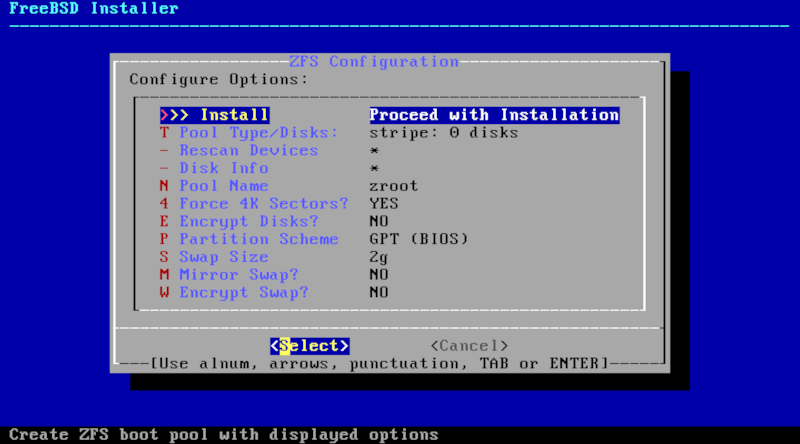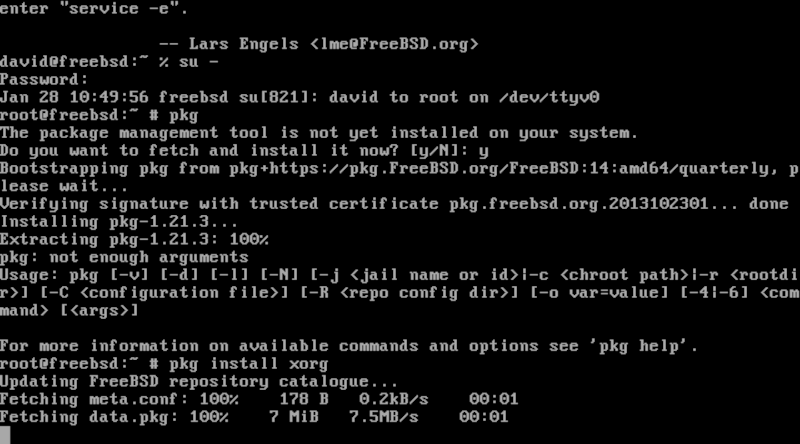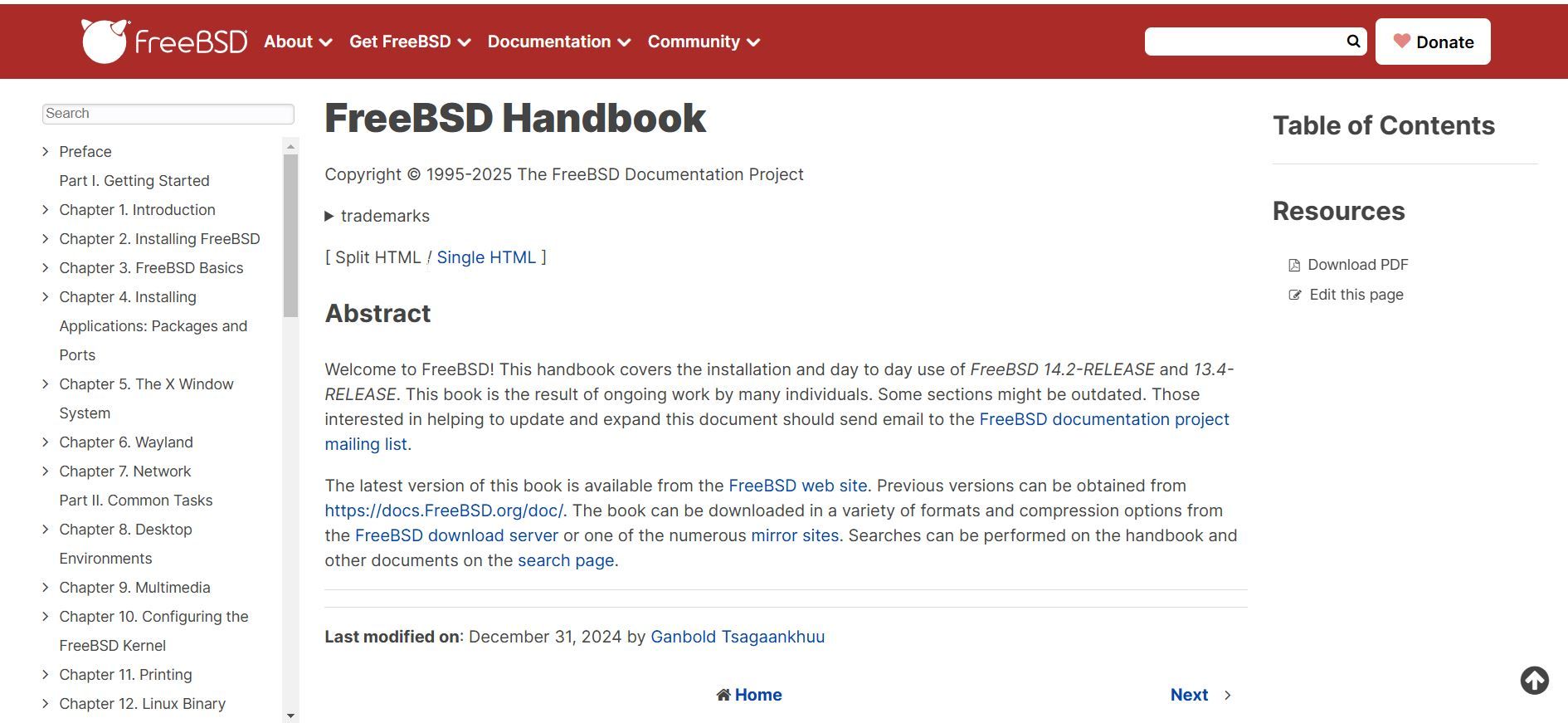Summary
- Installing FreeBSD is straightforward with a text-based installer and automatic partitioning available.
- Installing apps and desktop environments, like Xfce, using pkg commands is manageable and efficient.
- FreeBSD operates similarly to Linux distros, with clear documentation and a customization-friendly setup.
FreeBSD has a reputation as a great server OS, but also as a difficult-to-install desktop. I decided to put that theory to the test with a modern version of FreeBSD in 2025. What is it like to install and use?
Installing FreeBSD
Installing FreeBSD itself was straightforward. All I had to do was to download an ISO image and boot it, similar to any other Linux distro. I chose the latest 14.2 release, as it’s recommended for most production machines.
I initially chose a bare network install image, since that’s what I usually do when installing Linux distros; my machine usually has a good connection. When I tried to install FreeBSD, it would hang on downloading the distribution sets.
Since I was installing FreeBSD in a virtual machine, I tried switching the network card. The same thing happened. I downloaded a DVD image with all of the files required to install it. It worked. Maybe the servers were just having a bad day.
The installation program is geared toward more technical users, being completely text-based. The menus are mostly self-explanatory. The installer walked me through choosing a hard drive, partitioning it, installing software, setting up usernames, passwords (both for the root and regular users), and setting the system clock.
This isn’t my first run-in with FreeBSD. I’ve played around with it on occasion in virtual machines, and I was a heavy user of macOS in the 2000s, back when it was still called Mac OS X. macOS uses some of the FreeBSD’s command-line user utilities, also known as the “userland.”
Installing Software on FreeBSD
When you first boot FreeBSD, it’s a minimal environment. You’re dropped into a text-only interface, similar to what you would get if you installed Arch or Gentoo.
To make it into an actually useful desktop system, I had to install more programs. Fortunately, it’s easy to do with FreeBSD.
The traditional way to install things in FreeBSD is source packages, but I would probably miss my deadline waiting for everything to compile. Fortunately, I can install source packages with the imaginatively named pkg command.
First, I became root by using the su command
su -
Then I ran the pkg command to set it up.
pkg
I then installed the X Window System
pkg install xorg
The nice thing about pkg is that it automatically updates the package repository whenever I run it. This is something you usually have to do separately in most Linux package managers.
Choosing and Installing a Desktop
Now I was ready to install a desktop. My go-to for desktops is Xfce, because it’s minimal while still offering an attractive design.
pkg install xfce4
I had to install a couple of things. Xfce uses the /proc filesystem on Linux, which isn’t used by default on FreeBSD. This meant modifying the /etc/fstab file.
I also installed lightdm to manage logins graphically. This was a straightforward use of pkg:
pkg install
lightdm lightdm-gtk-greeter
Then I had to enable lightdm to run on startup:
sysrc lightdm_enable="YES"
sysrc is FreeBSD’s equivalent to systemctl on modern Linux distros. On reboot, lightdm finally came up and I could log into the same Xfce desktop I’ve used on Linux.
A desktop environment by itself is not enough. I needed apps to go with it, including a browser and productivity software. I chose Firefox as the browser, and that was also easy to install with pkg. LibreOffice was also easily available. Because no desktop is complete without a Solitaire game, I also installed Aisleriot.
Using FreeBSD
Using FreeBSD as a Linux user, FreeBSD has been similar to using Linux distros in its general look and feel. The system is well-documented. The manual pages are clear, and the FreeBSD Handbook provides more thorough explanations of concepts. This would be useful for people who have less experience with Unix-like operating systems. The Handbook will walk you through the most common setup and administration tasks.
How Does FreeBSD Work as a Desktop?
FreeBSD famously serves as a base for macOS. It’s also better known as a server. FreeBSD has a reputation of being difficult to set up as a desktop system. In my expereince, the support for Wi-Fi seemed lacking. I could also only get a maximum resolution of 1024 x 768. I might have had more difficulty with a laptop than in a virtual machine.
If you’ve used more technical distros like Arch Linux, you might feel at home setting up a FreeBSD desktop system. They’re both quite similar, even though Arch uses newer software. You start with a minimal base system and customize it to your liking.
For those who like a challenge and want something different, a FreeBSD desktop might be worth pursuing.








